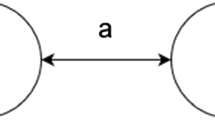Abstract
In this article we make sdrt’s glue logic for computing logical form dynamic. This allows us to model a dialogue agent’s understanding of what the update of the semantic representation of the dialogue would be after his next contribution, including the effects of the rhetorical moves that he is contemplating performing next. This is a pre-requisite for developing a model of how agents reason about what to say next. We make the glue logic dynamic by using a dynamic public announcement logic (pal). We extend pal with a particular variety of default reasoning suited to reasoning about discourse—this default reasoning being an essential component of inferring the pragmatic effects of one’s dialogue moves. We add to the pal language a new type of announcement, known as ceteris paribus announcement, and this is used to model how an agent anticipates the (default) pragmatic effects of his next dialogue move. Our extended pal validates certain intuitive patterns of default inference that existing pals for practical reasoning do not. We prove that the dynamic glue logic has a pspace validity problem, and as such is no more complex than pal with multiple \({\square}\) operators.
Similar content being viewed by others
References
Achinstein P. (1980) The nature of explanation. Oxford University Press, Oxford
Alchourrón C. E., Gärdenfors P., Makinson D. (1985) On the logic of theory change: Partial meeting contraction and revision functions. Journal of Symbolic Logic 50: 510–530
Asher N. (1993) Reference to abstract objects in discourse. Kluwer Academic Publishers, Dordrecht
Asher N. (1995) Commonsense entailment: A conditional logic for some generics. In: Crocco G., Farinas L., Herzig A. (eds) Conditionals: From philosophy to computer science. Oxford University Press, Oxford, pp 103–145
Asher, N., Bonzon, E., Lascarides, A. (2010). Extracting and modelling preferences from dialogue. In: Proceedings of the International Conference on Information Processing and Management of Uncertainty in Knowledge-based Systems (IPMU) (pp. 542–553), Heidelberg.
Asher N., Lascarides A. (2001) Indirect speech acts. Synthese 128(1–2): 183–228
Asher N., Lascarides A. (2003) Logics of conversation. Cambridge University Press
Asher, N., Lascarides, A. (2008). Commitments, beliefs and intentions in dialogue. In: Proceedings of the 12th Workshop on the Semantics and Pragmatics of Dialogue (Londial) (pp. 35–42), London.
Asher N., Morreau M. (1991) Commonsense entailment. In: John Mylopoulos, Raymond Reiter (eds) Proceedings of the twelfth international joint conference on artificial intelligence. Morgan Kaufmann, Los Altos California, pp 387–392
Balbiani P., van Ditmarsch H. P., Herzig A., de Lima T. (2010) Tableaux for public announcement logic. Journal of Logic and Comuptation 20(1): 55–76
Baltag, A., Moss, L.S., Solecki, S. (1999). The logic of public announcements, common knowledge and private suspicions. Technical Report SEN-R9922, Centrum voor Wiskunde en Informatica.
Baltag, A., Smets, S. (2006). Conditional doxastic models: A qualitative approach to dynamic belief revision. In: G. Mints, & R. de Queiroz (Eds.) Electronic Notes in Theoretical Computer Science, 165, pp. 5–21.
Benferhat, S., Dubois, D., Prade, H. (2006). Argumentative inference in uncertain and inconsistent knowledge bases. In: D. Heckermann, & A. Mamdani (Eds.) Proceedings of the 9th International Conference on Uncertainty in Artificial Intelligence (pp. 411–419) Cambridge: Morgan Kaufmann.
Benotti, L. (2010). Implicature as an Interactive Process. PhD thesis, Université Henri Poincaré, INRIA Nancy Grand Est, France.
Bromberger S. (1962) An approach to explanation. In: Butler R. (eds) Analytical philsophy. Oxford University Press, Oxford, pp 72–105
Egg M., Koller A., Niehren J. (2001) The constraint language for lambda structures. Journal of Logic, Language, and Information 10: 457–485
Grosz B., Sidner C. (1986) Attention, intentions and the structure of discourse. Computational Linguistics 12: 175–204
Hobbs J. R., Stickel M., Appelt D., Martin P. (1993) Interpretation as abduction. Artificial Intelligence 63(1–2): 69–142
Hobbs J. R. (1979) Coherence and coreference. Cognitive Science 3(1): 67–90
Kamp H. (1981) A theory of truth and semantic representation. In: Groenendijk J., Janssen T., Stokhof M. (eds) Formal methods in the study of language. Mathematisch Centrum, Amsterdam, pp 277–322
Kamp, H., & Reyle, U. (1993). From discourse to logic: Introduction to modeltheoretic semantics of natural language, formal logic and discourse representation theory. Kluwer Academic Publishers.
Kehler A. (2002) Coherence, reference and the theory of grammar. CSLI Publications, Cambridge University Press, Cambridge
Lascarides A., Asher N. (1993) Temporal interpretation, discourse relations and commonsense entailment. Linguistics and Philosophy 16(5): 437–493
Lascarides A., Asher N. (2009) Agreement, disputes and commitment in dialogue. Journal of Semantics 26(2): 109–158
Lutz, K. (2006). Complexity and succintness of public announcement logic. In: P. Stone, & G. Weiss (Eds.) Proceedings of the Fifth International Joint Conference on Autonomous Agents and Multiagent Systems (AAMAS) (pp. 137–144).
Pelletier J., Asher N. (1997) Generics and defaults. In: van Benthem J., ter Meulen A. (eds) Handbook of logic and language. MIT Press, Cambridge, pp 1125–1177
Poesio, M., Traum, D. (1998). Towards an axiomatisation of dialogue acts. In: J. Hulstijn, & A. Nijholt (Eds.) Proceedings of the Twente Workshop on the Formal Semantics and Pragmatics of Dialogue.
Sacks H., Schegloff E. A., Jefferson G. (1974) A simplest systematics for the organization of turn-taking in conversation. Language 50(4): 696–735
Stone, M. (1998). Modality in Dialogue: Planning, Pragmatics and Computation. PhD thesis, University of Pennsylvania.
Stone, M., Thomason, R. (2002). Context in abductive interpretation. In: Proceedings of the 6th International Workshop on the Semantics and Pragmatics of Dialogue (Edilog), Edinburgh.
van Benthem J. (2007) Dynamic logic of belief revision. Journal of Applied Non-Classical Logics 17(2): 129–155
van Rooij, R. (2001). Relevance of communicative acts. Ins Proceedings of Theoretical Aspects of Rationality and Knowledge (pp. 83–97).
Williams J. D., Young S. J. (2007) Partially observable Markov decision processes for spoken dialog systems. Computer Speech and Language 21(2): 231–422
Author information
Authors and Affiliations
Corresponding author
Rights and permissions
About this article
Cite this article
Asher, N., Lascarides, A. Reasoning dynamically about what one says. Synthese 183 (Suppl 1), 5–31 (2011). https://doi.org/10.1007/s11229-011-0016-4
Received:
Accepted:
Published:
Issue Date:
DOI: https://doi.org/10.1007/s11229-011-0016-4




